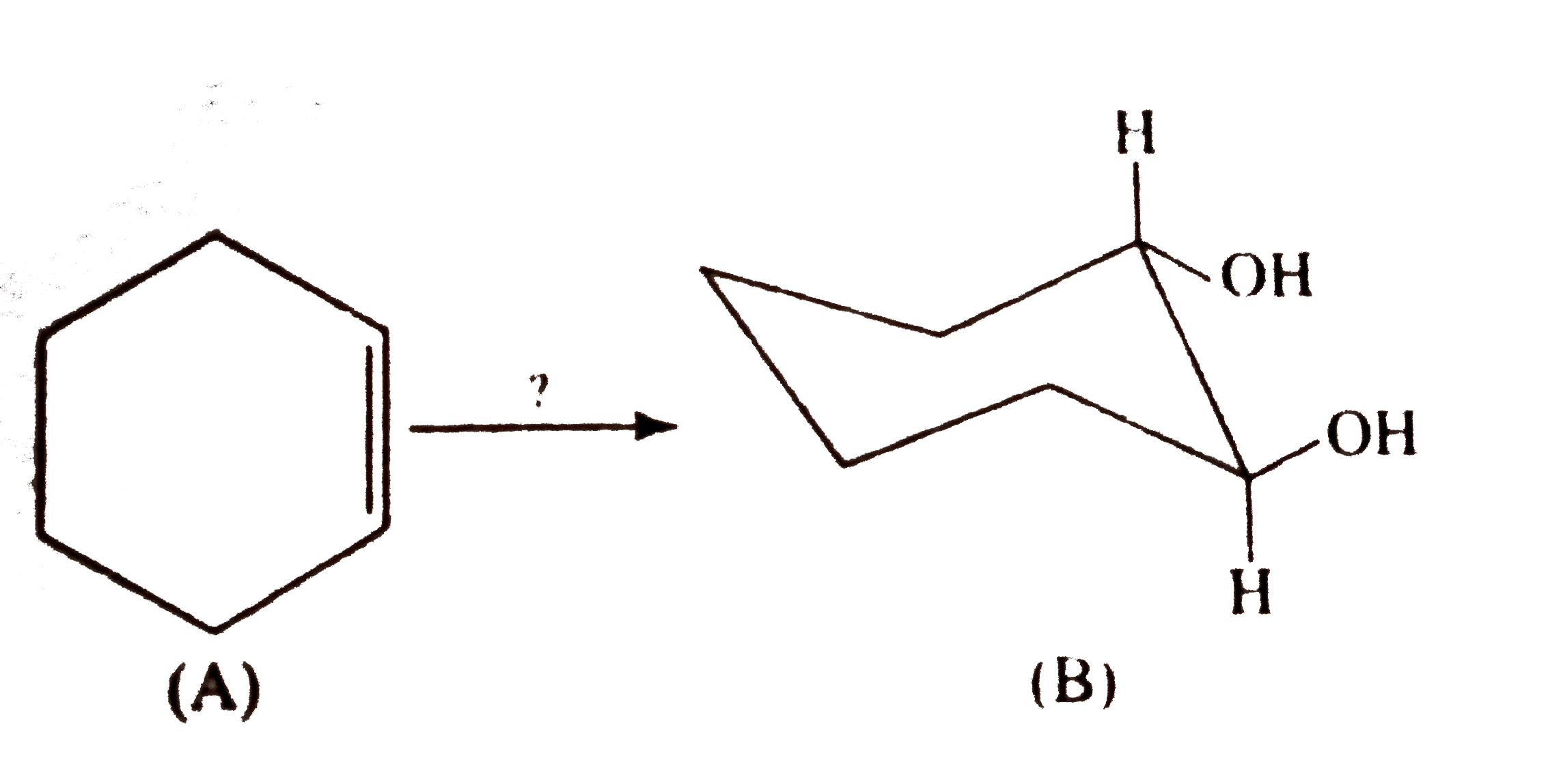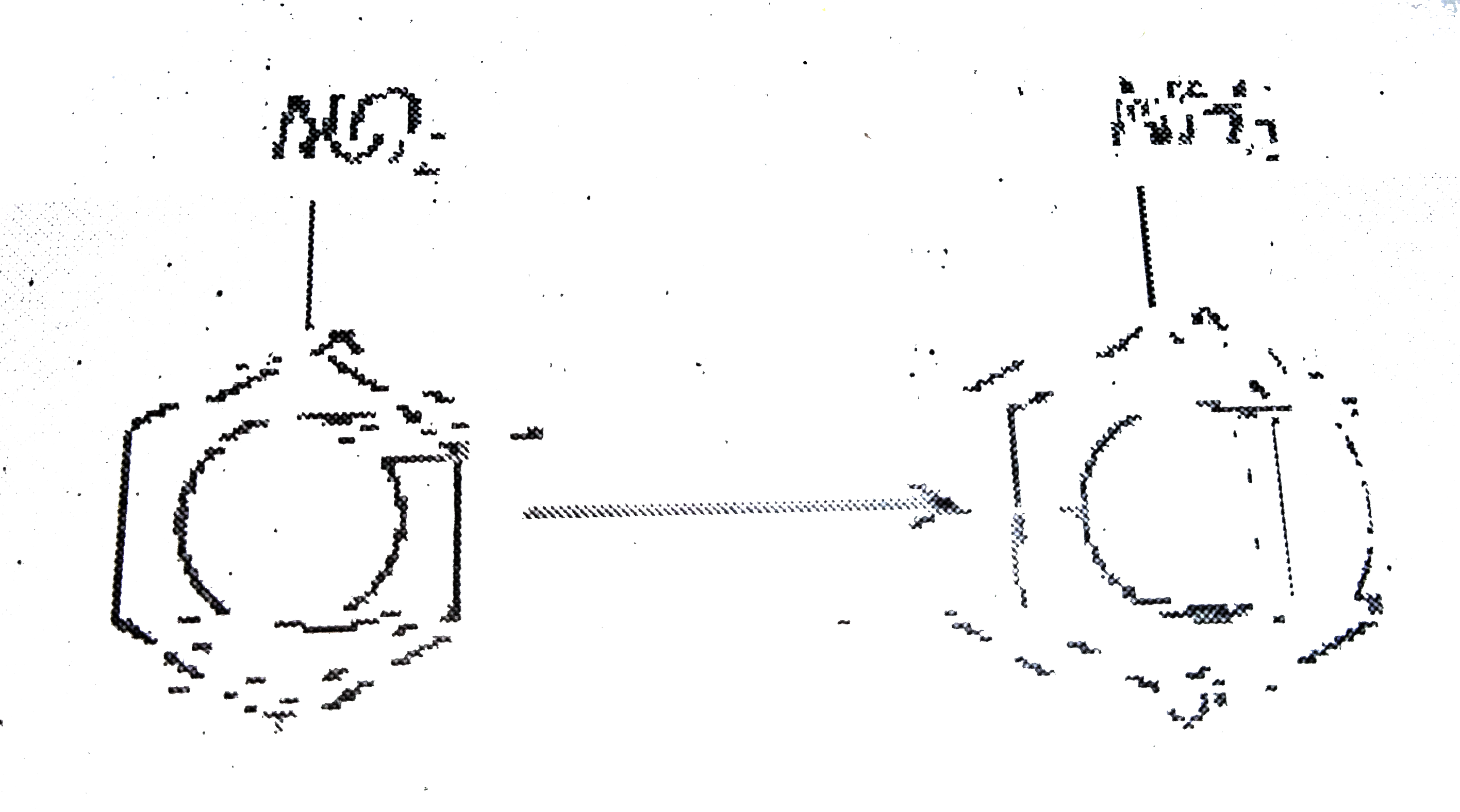Which of the following reagents can be used to convert
but−1−yne to butanone ?
K2Cr2O7/H+
dil.H2SO4/HgSO4
CrO3 in presence of (CH3CO)2O
O3/Zn−H2O
The correct Answer is:2
To convert but-1-yne to butanone, we need to analyze the reagents provided and their reactions with but-1-yne. Let's go through each reagent step by step.
1. Identify the structure of but-1-yne:
- But-1-yne has the structure CH3CH2C≡CH. It is an alkyne with a triple bond between the second and third carbon atoms.
2. Consider the first reagent: K2Cr2O7 in the presence of H+:
- K2Cr2O7 is a strong oxidizing agent. When it reacts with alkynes, it tends to oxidize them to carboxylic acids rather than ketones. Therefore, this reagent will not yield butanone from but-1-yne.
- Conclusion: This reagent is not suitable for the conversion.
3. Consider the second reagent: Dilute H2SO4 with HgSO4:
- The reaction of but-1-yne with dilute H2SO4 in the presence of HgSO4 leads to the hydration of the alkyne. This results in the formation of an enol (CH3CH2C(OH)=CH2), which then tautomerizes to form butanone (CH3CH2C(=O)CH3).
- Conclusion: This reagent can convert but-1-yne to butanone.
4. Consider the third reagent: CrO3 in the presence of acetic anhydride (CH3CO2O):
- CrO3 is a moderate oxidizing agent and will oxidize but-1-yne to an aldehyde rather than a ketone. Therefore, it will not lead to the formation of butanone.
- Conclusion: This reagent is not suitable for the conversion.
5. Consider the fourth reagent: Reductive ozonolysis (O3 followed by Zn/H2O):
- Reductive ozonolysis will cleave the alkyne and can lead to the formation of various products, including aldehydes and ketones. However, it does not specifically yield butanone from but-1-yne.
- Conclusion: This reagent is not suitable for the conversion.
Final Answer:
The reagent that can be used to convert but-1-yne to butanone is dilute H2SO4 with HgSO4.
---
- But-1-yne has the structure CH3CH2C≡CH. It is an alkyne with a triple bond between the second and third carbon atoms.
- K2Cr2O7 is a strong oxidizing agent. When it reacts with alkynes, it tends to oxidize them to carboxylic acids rather than ketones. Therefore, this reagent will not yield butanone from but-1-yne.
- Conclusion: This reagent is not suitable for the conversion.
- The reaction of but-1-yne with dilute H2SO4 in the presence of HgSO4 leads to the hydration of the alkyne. This results in the formation of an enol (CH3CH2C(OH)=CH2), which then tautomerizes to form butanone (CH3CH2C(=O)CH3).
- Conclusion: This reagent can convert but-1-yne to butanone.
- CrO3 is a moderate oxidizing agent and will oxidize but-1-yne to an aldehyde rather than a ketone. Therefore, it will not lead to the formation of butanone.
- Conclusion: This reagent is not suitable for the conversion.
- Reductive ozonolysis will cleave the alkyne and can lead to the formation of various products, including aldehydes and ketones. However, it does not specifically yield butanone from but-1-yne.
- Conclusion: This reagent is not suitable for the conversion.
The reagent that can be used to convert but-1-yne to butanone is dilute H2SO4 with HgSO4.
Topper's Solved these Questions
- ALDEHYDES, KETONES, CARBOXYLIC ACIDBOOK - RESONANCE ENGLISHCHAPTER - ALDEHYDES, KETONES, CARBOXYLIC ACIDEXERCISE - INORGANIC CHEMISTRY(d & f- Block Elments)
15 Videos
- ALKYL HALIDE, ALCOHOL, PHENOL, ETHERBOOK - RESONANCE ENGLISHCHAPTER - ALKYL HALIDE, ALCOHOL, PHENOL, ETHEREXERCISE - ORGANIC CHEMISTRY(Alkyl Halide, Alcohol,Phenol,Ether)
56 Videos
Similar Questions
Knowledge Check

Which of the following reagents can be used for above conversion?AZn/ΔBMg/ΔCNaI/acetoneDAlc. KOH
Which of the following reagent can be used to separate AgCl and AgI?
View SolutionWhich of the following reagent can be used to convert benzene diazonium chloride to phenol?
View SolutionWhich of the following reagents can be used for the reaction given below ?

View SolutionThe reagents used to convert

View SolutionWhich of the following reagents can be used to prepare 2-butyne by simple organic transformations?
View SolutionWhich of the following reagent is not used to carry out the reaction
_2019_CBT6_E01_003_Q01.png)
View SolutionWhich of the following reagents cannot be used for the given conversion?

View Solution

